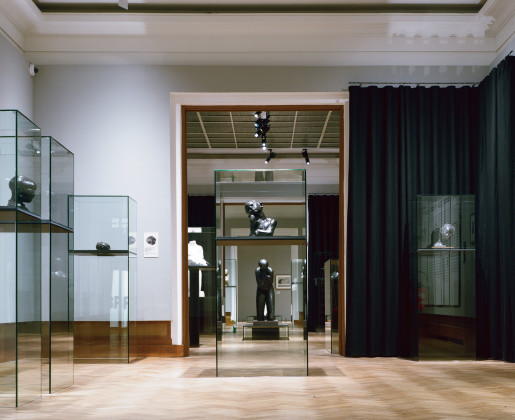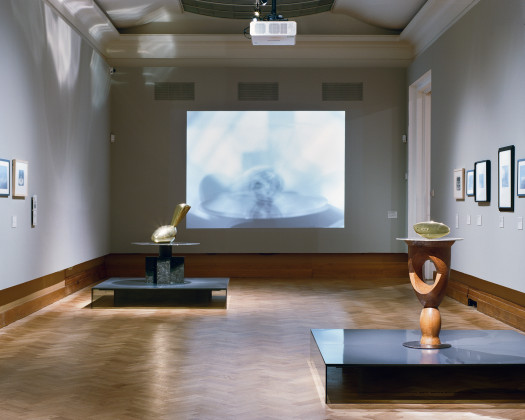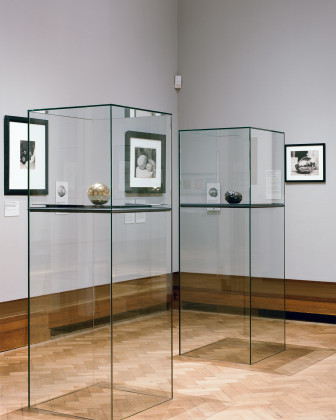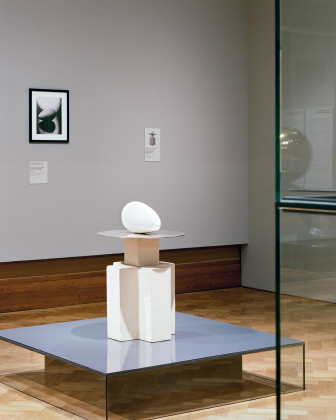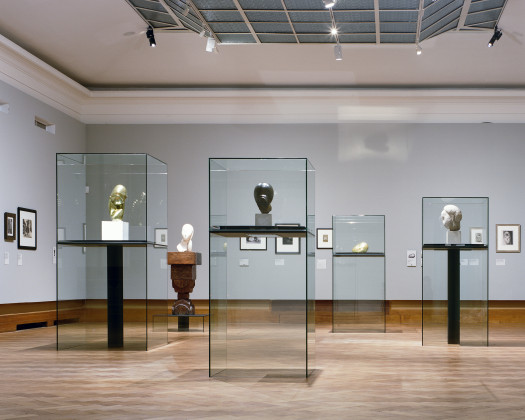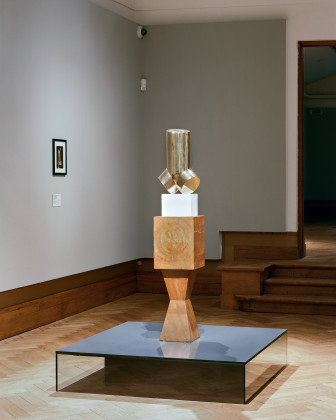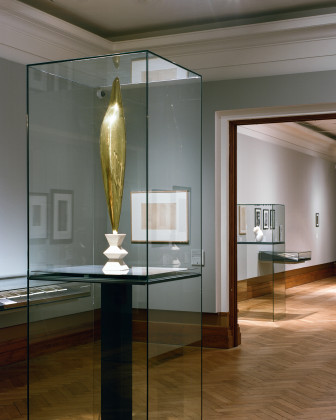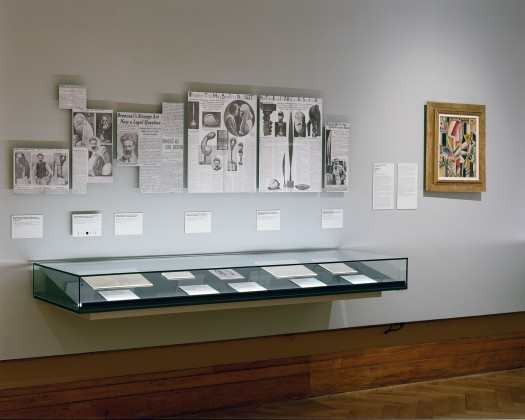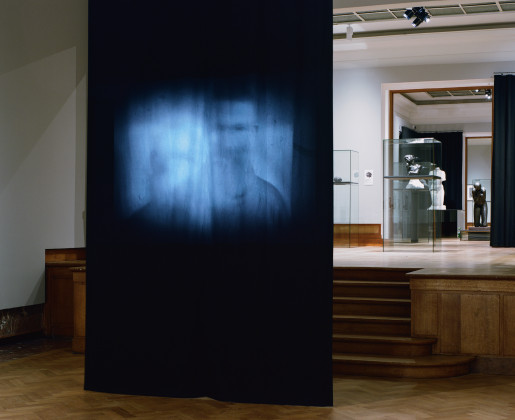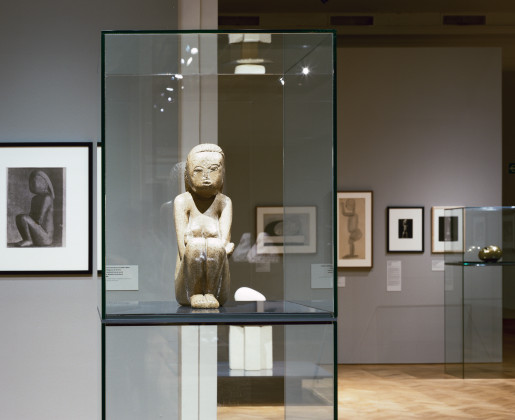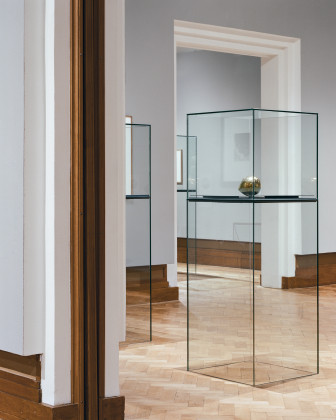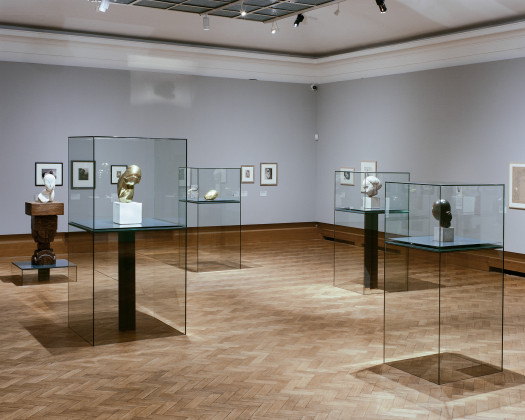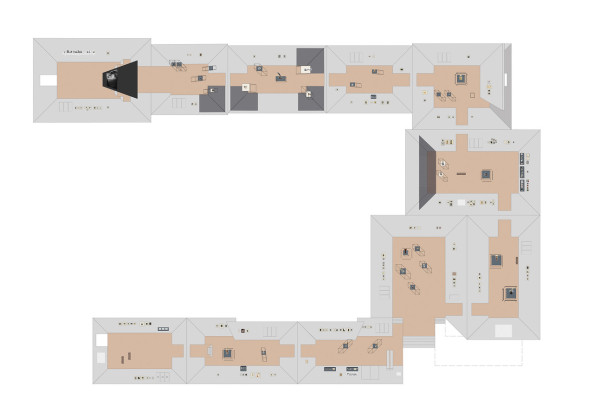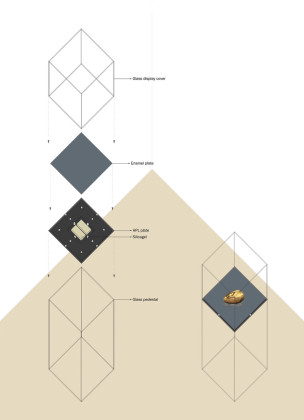In The Shadow of Great Trees
Bart Decroos, who has visited the exhibition with scenographer Aslı Çiçek, evaluates Brancusi's productions focused on the essence of things and their reflections on the exhibition design.
I visited the exhibition on a Monday, when the museum was closed to the public. Aslı Çiçek, the scenographer, had arranged the appointment to see the exhibition in peace. On other days, it was too crowded, she said. I waited for her in the empty entrance hall of the BOZAR in Brussels, designed by Victor Horta in the 1920s in the back then fashionable Art Deco style. By then, Horta had abandoned the more frivolous decoration of the Art Nouveau, as in his earlier work, and had moved on to a combination of more modern styles of ornamentation, which expressed a now long-lost belief in social and technological progress. The echoing of footsteps announced the arrival of Aslı, who led me through the largest central hall with its floors of expensive marble, the white-plastered columns blending classical motives with geometrical patterns, and the glass ceiling which lit the scene from above, but of which I wasn’t sure whether the light was natural or artificial. At the end of the hall, we climbed the stately staircase, walked past four bombastic columns and turned right, where large, black letters on the wall spelled the title of the exhibition and announced its beginning: "BRANCUSI". The large, stickered letters overlapped with three metal plates attached to the wall, a slight offset projecting their shadows, with each of the plates containing the subtitle in a different language: "La sublimation de la forme", "Sublimeren van vorm", "Sublimation of form".
The exhibition takes places as part of the 27th edition of the EUROPALIA festival in Brussels, with Romania as this year’s guest. The decision to dedicate the entire exhibition to the Romanian sculptor and visual artist Constantin Brancusi (1876-1957) was justified by his representative status for Romanian art in general, as curator Doïna Lemny writes in the accompanying catalogue, who describes him as "the father of modern sculpture". As the subtitle suggests, Brancusi is understood as an artist who gradually freed himself from any influence and tried to reach the essence of things by gradually "sublimating" their forms. This continuous quest for the essence of things becomes visible in the sequence of the exhibition rooms, where in eleven thematically defined and quasi-chronological spaces, showing both his well-known sculptures and lesser-known photography, Brancusi’s gradual liberation from his own masters and references becomes visible.
As Aslı walks me through the deserted exhibition rooms, filled only with the presence of Brancusi’s enigmatically silent sculptures, she tells me the story of the accompanying scenography. Brancusi’s work is shown in a rather restrained set-up: pedestals for sculptures, frames for the photographs, and, every once in a while, a vitrine for documents. In addition, various rooms also contain reference works -Auguste Rodin, but also Wilhelm Lehmbruck, Medardo Rosso, Isamu Noguchi and Irina Codrenau- to which Brancusi responded in his own work and which are framed against dark wall curtains, as if they were placed in the coulisses of Brancusi’s work. Following the first room, where Brancusi’s persona is introduced through his carefully staged self-portraits and in which he profiled himself more as a craftsman than an artist, the exhibition of the work itself starts in the second room with his early Parisian sculptures. As the wall panels tell me, Brancusi left his parental home at the age of eleven and worked for some time for a barrel maker, a potter, and in a paint shop, where he would learn the craft of manipulating raw materials. Eventually he went to study at the School of Arts and Crafts in Craiova, the School of Fine Arts in Bucharest, and finally at the School of Fine Arts in Paris. However, it was only when he became an assistant in Rodin’s studio that he began to question his academic training and consciously started to develop his own work.
Brancusi only worked at Rodin’s for a few months before he left again, yet the latter would remain a strong influence from which he needed to distance himself, to sublimate Rodin’s presence in the work he made. "Rien ne pousse dans l’ombre d’un grand arbre" he said, convinced that he would never be able to develop himself as an autonomous artist in the shadow of Rodin’s greatness. The works in the third room, fittingly themed "The Shadow of Rodin", are the witnesses to this early process of liberation. Unlike Rodin, Brancusi stopped moulding models in clay to produce casts and instead embraced the "taille directe", a technique in which he began to carve directly into the stone or wood. In the centre of the room, the sculpture The Prayer is shown, with Rodin’s own eponymous sculpture a few metres away, showing the difference between both works. Whereas Rodin made a plaster statue of a woman’s body, detailed down to the texture and folds of the skin, Brancusi made a bronze statue of an abstracted body, a universal figure unmarked by its sexuality. Brancusi’s process of sublimation here appears as an attempt to transcend the specificity of individual models, reflecting Rodin’s work through its inversion.
While comparing the two sculptures, Aslı talks about the questions she faced in the design of the scenography, which seem to be not far from Brancusi’s own questioning. She explains how Brancusi has always been a fundamental reference in her own work, so that the design of this scenography prompted her to deliberately distance herself from his work. The question was how to give form to the scenographic elements, however restraint they might be, without interfering with Brancusi’s work, and especially for the pedestals on which the sculptures are shown. From the fourth room -entitled "Moving on from Rodin", with the works The Kiss and Wisdom of the Earth, among others, which balance on the verge of a metamorphosis between raw material and portrait- we wander into the fifth room. Here, under the title "From the Portrait to the Essence of the Figure", the work Beginning of the World is placed in the centre of the space. The work shows how Brancusi’s quest for the essence of things, in which the material itself increasingly started to define the form of his sculptures, the pedestal becomes part of the work. Beginning of the World is an egg-shaped sculpture of marble, both symbolic and pure matter, supported by a silver plate on a cruciform pedestal of stone. In addition, a photograph taken by Brancusi is displayed on one of the walls, in which a close-up shows the egg and its distorted reflection in the underlying mirroring surface, as if suspended on its own. On the one hand, Brancusi’s essentialism seemingly reduced objects to pure things in themselves, isolated from their surroundings, or, on the other, including their surroundings -the pedestal- into the work itself. The question thus was how to design pedestals which would distance themselves from the works, and which would distance the scenographer from the artist.
As we progress through the rooms one by one -"The Studio", where Brancusi’s involvement with the Parisian avant-garde that gathered in his atelier is shown; "Every Sculpture is a Form in Motion" about his exploration of the relation between form and movement; "The Muses", which shows a thematic series of sculptures based on the figure of the muse; "From Song to Flight", exhibiting his bird sculptures; "From the Torso to Sexual Ambiguity", where his sublimation of forms scandalously undermined binary sexuality; "The Monumental Complex of Targu Jiu- Aslı points out how the sculptures are invariably shown on pedestals of transparant glass, which are not naively claimed to completely disappear, but which instead are present as a play of light and shadow, reflection and dust particles. Just as in Brancusi’s photograph of Beginning of the World, the pedestals act as reflective surfaces to suspend the sculptures in space, while at the same time suggesting how their rectangular forms seem to evaporate. It is not a matter of making a neutral background for the sculptures, even the absence of a pedestal becomes meaningful in the narrative of an exhibition. Instead, in the shadow of Brancusi’s work, the transparency of the pedestals demonstrates a similar logic of sublimation of form, taking it to its logical end: the suggestion of nothingness. In doing so, the scenography resolutely affirms Brancusi’s statement that rien ne pousse dans l'ombre d'un grand arbre, or, in the case of the pedestals, almost nothing.
Walking back through the central hall to leave the BOZAR, the decorative richness of its architecture dissolves into a raw materiality, whose final essence remains enigmatically silent. Following Brancusi, my gaze focuses on the presence of the pure marble, the rough texture of the seemingly smooth plaster, and the crisp reflection of the glass roof, regardless of its source.
Related Content:
-

İşbank Painting Sculpture Museum
-
Sign Towards the Void
Suggesting that the presence of an object can make a space emptier than mere emptiness could ever dream of might be one of the most valuable insights into Anish Kapoor's work. This quality of extreme, generative emptiness can be seen throughout his work.
-

Poesie of Illusions Exhibition Space Design
-
Learning From Space
Aslı Çiçek talks to XXI about 4th İstanbul Design Biennial's exhibition design and how it was implemented in various spaces.
-

Silhouettes, Shadows and Shapes
-

Curves and Volumes
-

Boxes of Experience
 12.12.2019
12.12.2019



